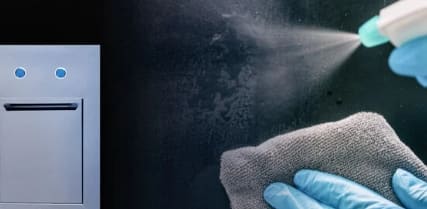Surface disinfection is critical in maintaining a clean and safe environment, particularly in healthcare facilities, laboratories, and public spaces. One of the most effective and eco-friendly methods is using hydrogen peroxide. This powerful oxidizing agent is widely recognized for its ability to kill bacteria, viruses, fungi, and other pathogens. In recent years, specialized Surface Disinfection with Hydrogen Peroxide Equipment has become increasingly popular due to its efficiency and safety. This article will explore how hydrogen peroxide can be used for surface disinfection and the benefits of using specialized equipment.
Understanding Hydrogen Peroxide as a Disinfectant
Hydrogen peroxide (H2O2) is a simple compound composed of water and oxygen. Its disinfectant properties are well-known, making it a popular choice for killing a wide range of microorganisms. When hydrogen peroxide comes into contact with bacteria or viruses, it breaks down into water and oxygen, releasing free radicals that attack and destroy the cell walls of these pathogens.
One of the advantages of hydrogen peroxide is its versatility. It can be used on a variety of surfaces, including metals, plastics, and fabrics, without causing damage or leaving harmful residues. This makes it ideal for use in sensitive environments such as hospitals, schools, and food processing facilities.

Steps for Surface Disinfection with Hydrogen Peroxide
- Preparation: Before beginning the disinfection process, it’s important to clean the surface to remove any visible dirt or debris. While hydrogen peroxide is effective at killing microorganisms, it’s less effective at penetrating heavy soil. Therefore, a preliminary cleaning step is crucial.
- Application: Hydrogen peroxide can be applied in various concentrations, typically ranging from 3% to 6%, depending on the level of disinfection required. It can be sprayed directly onto surfaces using a spray bottle or applied with a cloth or sponge. The surface should be thoroughly wetted with the solution to ensure complete coverage.
- Dwell Time: After application, the hydrogen peroxide needs time to work. The dwell time, or contact time, is typically around 10 minutes. This allows the solution to effectively penetrate and kill any pathogens present on the surface. It’s important not to wipe the surface dry before the dwell time has passed, as this can reduce the effectiveness of the disinfection.
- Drying: After the appropriate dwell time has elapsed, the surface can be allowed to air dry or wiped with a clean cloth. Since hydrogen peroxide breaks down into water and oxygen, there’s no need for rinsing, and it leaves no toxic residues.
Advantages of Using Surface Disinfection with Hydrogen Peroxide Equipment
While manual application of hydrogen peroxide is effective, the use of specialized Surface Disinfection with Hydrogen Peroxide Equipment can significantly enhance the efficiency and consistency of the disinfection process. These devices are designed to deliver a fine mist or vapor of hydrogen peroxide, ensuring even coverage of surfaces, including hard-to-reach areas.
- Uniform Application: Disinfection equipment ensures that hydrogen peroxide is evenly distributed across all surfaces, including corners, crevices, and high-touch areas. This uniform application reduces the risk of missed spots, which can harbor harmful pathogens.
- Automated Processes: Many hydrogen peroxide disinfection systems are automated, meaning they can operate without direct human intervention. This is particularly beneficial in environments where large areas need to be disinfected regularly, such as hospitals or commercial buildings.
- Reduced Human Error: By automating the disinfection process, the likelihood of human error is minimized. This is important for ensuring consistent results, especially in critical settings where disinfection is paramount.
- Safety and Efficiency: Specialized equipment is designed to optimize the concentration and dwell time of hydrogen peroxide, maximizing its disinfectant properties while minimizing exposure risks to humans. This is particularly important in settings where people are frequently present.
Conclusion
Hydrogen peroxide is a highly effective and environmentally friendly disinfectant that can be used on a wide variety of surfaces. The process of disinfection involves careful preparation, application, and appropriate dwell time to ensure the thorough elimination of pathogens. The use of Surface Disinfection with Hydrogen Peroxide Equipment further enhances this process, providing uniform application, reducing human error, and increasing overall efficiency. As the importance of maintaining hygienic environments continues to grow, hydrogen peroxide remains a top choice for safe and effective surface disinfection.